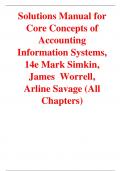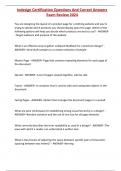Exam (elaborations)
Solutions Manual for Core Concepts of Accounting Information Systems, 14e Mark Simkin, James Worrell, Arline Savage (All Chapters)
- Course
- Institution
- Book
Solutions Manual for Core Concepts of Accounting Information Systems, 14e Mark Simkin, James Worrell, Arline Savage (All Chapters)
[Show more]




